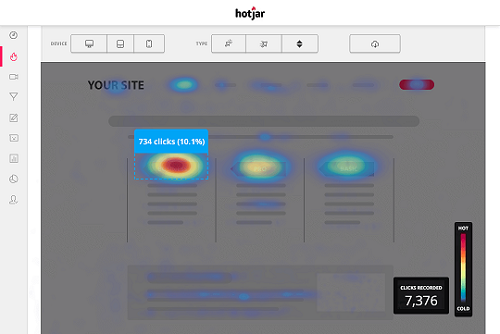How Influencer Marketing Has Changed In The Last 5 years
Alicia Van der Meer, digital marketing manager of Monumental, explains the evolution of influencer marketing in the last five years, with valuable insight into how brands can get it right. With personal accounts from today’s influencers, Alicia dissects the industry and the trends that have become so ingrained in our everyday life.
Over the past five years, momentous societal changes have significantly impacted the development of influencer marketing. The discipline has been forced to change to support businesses and brands in meeting changing customer needs.
Perhaps this is as a result of the pandemic and consumers becoming more aware of the brands they are buying from, or the role that reality TV has played in advertising, but there has been a noticeable shift in how influencer marketing operates. But what exactly has happened?
I’ve worked with influencers since 2018 and have experienced the shift firsthand. There has been a noticeable change in the type of content that brands are asking their influencers to produce. Several years ago, brands would send us briefs requesting macro-influencers to share a static image with a simple caption.
Whereas today, briefs are becoming a lot more personalised and tailored to the style of the influencer. Influencer marketing is evolving and brands are beginning to understand that, in order to appeal authentic to present-day, savvy consumers, strategies need to evolve with trends and spending habits.
Here are some of the themes that have impacted the role of influencer marketing and what I predict will continue to do so in the near future - combined with some commentary from influencers for good measure!
Changes in the Instagram algorithm stunting influencer follower growth
Similar to the Facebook algorithm, the Instagram algorithm uses a proprietary combination of variables to determine which material should be prioritised and which can be pushed to the bottom of a user's newsfeed.
In 2022, with so many new features being added to Instagram, such as Instagram reels and Instagram shopping, the social media platform has developed algorithms that can prioritise some content, whilst de-prioritising others. Influencers have suffered as a result, as it means they are no longer able to organically increase their fan base the same way they could five years ago.
Declan Doyl from Celebrity Ex on the Beach, season 2, says: “It’s harder to increase your followers now as the algorithm has changed and some of my posts don’t get seen for days later. It’s very frustrating as it makes it harder to get brand and sponsorship deals if the engagement is seemingly low. ”
.png) |
Freddie Bentley from The Circle says: “It is so much harder to gain an organic following now Instagram has algorithms you have to get through. I can understand why people have turned to other apps like TikTok because the creators' hard work pays off more than it does on Instagram.
“It's frustrating! I’ve been shadow-banned many times from Instagram as my views and opinions can be very controversial, however, it's my own platform where I can express my thoughts about certain situations and my safe space - that's why people follow me.”
Video content is more popular than ever before
Video content has been booming ever since Tiktok came into the scene - with other social channels introducing and prioritising video formats on their own platforms to help compete.
WordStream has found that more video content is being uploaded in 30 days than what major television networks in the US have created in the past 30 years.
For example, Instagram Reels are pushed to all Instagram users, not just those who follow you. Many consumers are hopping on board because the special format lets brands and creators go viral and ignite significant community growth on the platform, which is what has been lacking from static image content.
82% of the global internet traffic will come from streaming videos and downloads (Cisco Internet Report) - with this, we see no indication that Reels will slow down in 2022, from new creative tools to a more sophisticated algorithm - it will only get better and better from here.
Dale Mehmet from Love Island, season 7, says: “Brands are definitely asking for more video content through reels, TikToks, etc. It’s because they can deliver better engagement results for brands and audiences can receive deeper information from a video/influencer in this format.”
Biggs Chris from Love Island, season 6, says: “I definitely get asked to do more video content now than a couple of years ago! The pandemic triggered a rapid rise in video content creation between brands and influencers - especially with the rise of social platforms like TikTok. Video content can create a connection that static images can’t. It’s great to see an evolution of content consumption shift from text, to images, and now videos and even metaverse and virtual realities.”
The rise of more long-term influencer strategies with micro-influencers
More brands are beginning to collaborate for longer with micro- and nano-influencers who are compatible with their brand's voice and style, as opposed to working with many influencers on brief campaigns and hiring high-profile or celebrity influencers.
The reason why this is on the rise is that nano- and micro-influencers have a much more niche and close-knit community with their audience, which adds to the authenticity and credibility of messaging.
Lou Aira, a lifestyle, micro-influencer, says: “A couple of years ago, big fast fashion brands such as Pretty Little Thing and Boohoo would ask me to collaborate with them. But nowadays, it’s smaller businesses and more niche brands who are getting in touch with me because my community is more focused and targeted to the audiences they want to reach.”
At the end of the day, people bond with one another. A relatable face can help customers feel more connected to a brand, and when they establish a long-term relationship with the proper influencers and carry out a successful influencer strategy, they will get the results they seek in terms of customer loyalty.
What may be considered hot now may already be out-of-date next month in the dynamic world of social media and influencers. Therefore, it's crucial for brands to pay close attention to how these developments will impact their social media presence, content creation and ensure they are meeting the fast changes in customers' needs to stay ahead of the game.
Article by Monumental Marketing Home-
How Influencer Marketing Has Changed In The Last 5 years
 Reviewed by Mili Ponce
on
Wednesday, July 13, 2022
Rating:
Reviewed by Mili Ponce
on
Wednesday, July 13, 2022
Rating:
 Reviewed by Mili Ponce
on
Wednesday, July 13, 2022
Rating:
Reviewed by Mili Ponce
on
Wednesday, July 13, 2022
Rating:



















 Entrepreneur, international speaker on Social Media Marketing. First one in the UK to write and speak in conferences about Twitter as a marketing tool. Consultant to Corporate Companies, Government Organizations, Marketing Managers and Business Owners.
Entrepreneur, international speaker on Social Media Marketing. First one in the UK to write and speak in conferences about Twitter as a marketing tool. Consultant to Corporate Companies, Government Organizations, Marketing Managers and Business Owners. Aspiring novelist with a passion for fantasy and crime thrillers. He hopes to one day drop that 'aspiring' prefix. He started as a writer and soon after he was made Executive Editor and Manager of the team at Social Songbird. A position he held for 5 years.
Aspiring novelist with a passion for fantasy and crime thrillers. He hopes to one day drop that 'aspiring' prefix. He started as a writer and soon after he was made Executive Editor and Manager of the team at Social Songbird. A position he held for 5 years. Musician, audio technician, professional tutor and a Cambridge university English student. Interested in writing, politics and obsessed with reading.
Musician, audio technician, professional tutor and a Cambridge university English student. Interested in writing, politics and obsessed with reading. Recently graduated with a BA in English Literature from the University of Exeter, and he is about to study an MA in Journalism at the University of Sheffield. He is an aspiring journalist and novelist; in his free time he enjoys playing chess, listening to music and taking long walks through nature.
Recently graduated with a BA in English Literature from the University of Exeter, and he is about to study an MA in Journalism at the University of Sheffield. He is an aspiring journalist and novelist; in his free time he enjoys playing chess, listening to music and taking long walks through nature. Lucy is an undergraduate BSc Politics and International Relations student at the London School of Economics and Political Science.
Lucy is an undergraduate BSc Politics and International Relations student at the London School of Economics and Political Science. Anna Coopey is a 4th year UG student in Classics at the University of St Andrews in Scotland. She is a keen writer and researcher on a number of topics, varying from Modern Greek literature to revolutionary theory.
Anna Coopey is a 4th year UG student in Classics at the University of St Andrews in Scotland. She is a keen writer and researcher on a number of topics, varying from Modern Greek literature to revolutionary theory.
